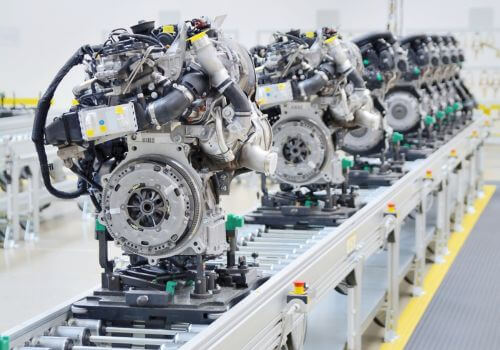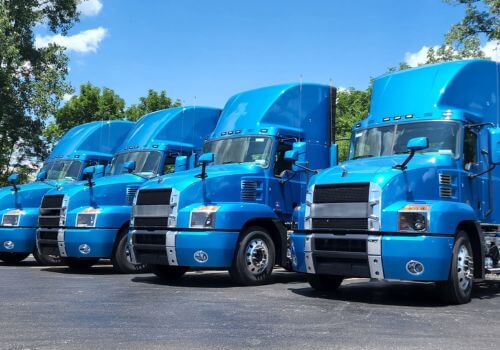In the world of logistics, an Original Equipment Manufacturer (OEM) plays a crucial role in the supply chain and production process. To understand the concept of OEM in logistics, it’s important to break down its definition, functions, and impact on various industries.
What is OEM (Original Equipment Manufacturer) in logistics?
An Original Equipment Manufacturer (OEM) is a company that produces parts, components, or systems that are used in another company’s end product. These components are typically integrated into the final product without significant modifications. OEMs usually do not sell their products directly to consumers; instead, they supply them to other manufacturers who incorporate these parts into their own branded products.
What are the roles of OEMs in logistics?
In the context of logistics, OEMs are essential players in the supply chain. They are responsible for producing and delivering critical components to manufacturers, ensuring that production lines can operate smoothly and efficiently. The logistics involved in OEM operations are complex and require careful planning and coordination.
What are the key characteristics of OEMs?
OEMs have several distinguishing features that set them apart in the logistics and manufacturing landscape:
Specialization: OEMs often focus on producing specific types of components or systems. This specialization allows them to develop deep expertise and achieve economies of scale in their production processes.
Business-to-Business Focus: Unlike companies that sell directly to consumers, OEMs primarily engage in business-to-business (B2B) transactions. Their customers are typically other manufacturers or value-added resellers (VARs).
Customization Capabilities: Many OEMs offer customization options, allowing their customers to request specific modifications to components to meet their unique requirements.
Quality Standards: OEMs are generally expected to maintain high quality standards, as their components often play critical roles in the final products.
Long-term Partnerships: OEMs often form long-term relationships with their customers, working closely with them to meet evolving needs and specifications.
OEMs in different industries
The concept of OEM is prevalent across various industries, each with its unique characteristics and requirements:
Automotive industry
In the automotive sector, OEMs play a vital role in supplying components to car manufacturers. Companies like Bosch, Continental, and Denso are major automotive OEMs that provide critical parts such as engines, transmissions, and electronic systems to car manufacturers like Ford, Toyota, and Volkswagen.
The logistics involved in automotive OEM operations are particularly complex due to the Just-in-Time (JIT) manufacturing processes employed by many car manufacturers. This requires precise timing and coordination to ensure that components arrive at assembly plants exactly when needed.
Electronics industry
In the electronics industry, OEMs supply components like processors, displays, and memory modules to device manufacturers. For example, companies like Intel (processors) and Samsung (displays) are major OEMs in this sector, supplying components to computer and smartphone manufacturers.
The fast-paced nature of the electronics industry means that OEMs must be agile and responsive to rapidly changing technologies and market demands. This puts additional pressure on logistics operations to be flexible and efficient.
Aerospace industry
In aerospace, OEMs provide critical components such as engines, avionics systems, and structural elements to aircraft manufacturers. Companies like Rolls-Royce (engines) and Honeywell (avionics) are key OEMs in this sector.
The aerospace industry has particularly stringent quality and safety requirements, which impacts the logistics processes for OEMs in this sector. Traceability and documentation of parts throughout the supply chain are crucial.
5 OEM logistics strategies
To address the unique challenges they face, OEMs employ various logistics strategies:
Vendor-Managed Inventory (VMI): In this model, the OEM takes responsibility for maintaining optimal inventory levels at their customer’s location. This helps ensure product availability while minimizing inventory costs.
Cross-Docking: This strategy involves transferring incoming shipments directly to outgoing vehicles with minimal storage time. It’s particularly useful for OEMs dealing with time-sensitive deliveries.
Milk Runs: This involves a single vehicle making multiple stops to either pick up components from various suppliers or deliver to multiple customers. It’s an efficient way to handle smaller, frequent shipments.
Postponement: This strategy involves delaying the final configuration or customization of a product until the last possible moment. It allows OEMs to maintain flexibility while reducing inventory costs.
Collaborative Planning, Forecasting, and Replenishment (CPFR): This involves close collaboration between OEMs and their customers to improve demand forecasting and inventory management.
What are the roles of technology in OEM logistics?
Technology plays a crucial role in modern OEM logistics operations:
Enterprise Resource Planning (ERP) Systems: These integrated software solutions help OEMs manage various aspects of their operations, including logistics, inventory, and production planning.
Internet of Things (IoT): IoT devices are used for real-time tracking of shipments and monitoring of inventory levels. This enhances visibility across the supply chain.
Artificial Intelligence and Machine Learning: These technologies are used for demand forecasting, route optimization, and predictive maintenance of logistics equipment.
Robotics and Automation: Many OEMs are implementing robotics in their warehouses and distribution centers to improve efficiency and accuracy.
Blockchain: This technology is being explored for enhancing supply chain transparency and traceability, which is particularly important for OEMs in industries with strict regulatory requirements.
OEM vs. aftermarket parts
In logistics, it’s important to distinguish between OEM parts and aftermarket parts:
OEM Parts: These are components made by or for the original manufacturer of the end product. They are designed to meet the exact specifications of the original product.
Aftermarket Parts: These are components made by third-party manufacturers, not affiliated with the original product manufacturer. They are often less expensive but may vary in quality and fit.
The logistics for OEM parts often involve more stringent quality control and traceability measures compared to aftermarket parts.
In summary, an Original Equipment Manufacturer (OEM) in logistics is a company that produces parts or components used in another company’s end product, often playing a crucial role in supply chain management and just-in-time manufacturing processes.






